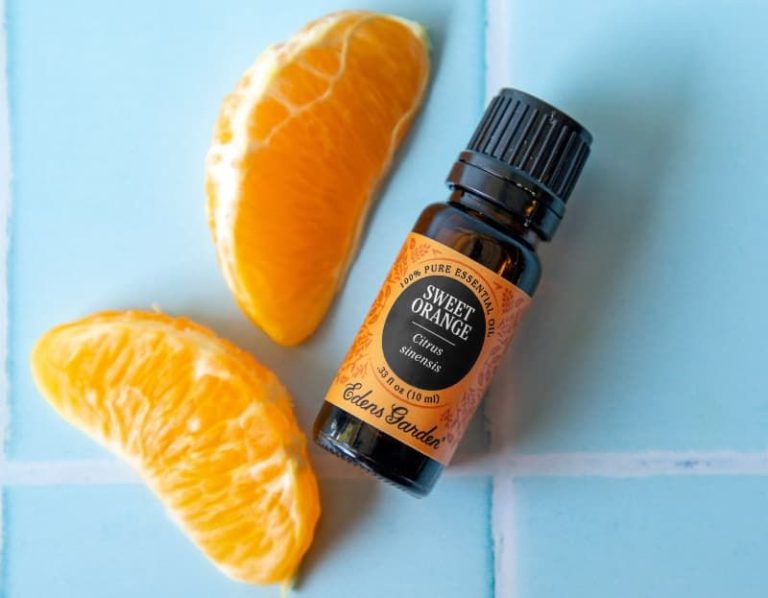What Is Frankincense And Myrrh Oil Used For?
Frankincense and myrrh are aromatic resins that have been prized since ancient times for their fragrant and medicinal properties. Frankincense is a milky white resin extracted from trees of the Boswellia genus, while myrrh comes from Commiphora trees. Both resins have been used for over 5000 years in incense, perfumes, and ancient rituals. They were highly revered in places like Egypt, China, India, and Rome.
Frankincense and myrrh are perhaps best known from biblical references. They were given as gifts to the infant Jesus and have strong symbolic significance in Christianity. Frankincense represents Christ’s divinity, while myrrh represents his mortality. These resins were expensive luxury items at the time, conveying great cultural value.
Today, essential oils extracted from frankincense and myrrh resins are still used in incense, perfumes, and aromatherapy. They also continue to be studied for their potential health benefits.
Sources and Production
Frankincense and myrrh come from trees of the genus Boswellia and Commiphora, respectively. The trees are native to Northern Africa and the Middle East. Frankincense is harvested from Boswellia trees such as B. sacra, B. carterii, B. frereana, and B. serrata. Myrrh comes from Commiphora trees like C. myrrha, C. guidotti, and other species.

The resins are obtained by making small incisions in the bark of the trees, which allows the sap to ooze out. The sap is allowed to harden on the tree trunk over several months before being collected. Once harvested, the resins are sorted and may be steam-distilled to produce essential oils containing the aromatic terpenes and sesquiterpenes. The resins may also be used in their raw form or powdered for various purposes.
Primary producers of frankincense and myrrh oils are located in the Middle East and Africa, such as Oman, Yemen, and Somalia. However, demand for the oils has led to production in other regions like India and parts of Asia.
(Source: https://en.wikipedia.org/wiki/Myrrh)
Chemical Composition
The main active compounds found in frankincense oil are monoterpenes such as alpha-pinene, beta-pinene, and alpha-thujene, as well as sesquiterpenes like beta-caryophyllene. It contains incensole and incensole acetate, which are thought to have anti-inflammatory and neuroprotective effects [1]. Myrrh oil contains furanoeudesma-1,3-diene, curzerene, and lindestrene as its primary compounds, along with sesquiterpenes. The terpenoids found in myrrh resin give it its anti-inflammatory and analgesic properties [2].
The main difference in their chemical compositions is that frankincense oil contains mostly monoterpenes, while myrrh oil contains furanosesquiterpenes. Frankincense resin tends to contain a higher percentage of volatile oil than myrrh resin, so frankincense oil is mainly composed of monoterpenes, while the non-volatile compounds like sesquiterpenes dominate in myrrh oil.
Traditional and Modern Uses
Frankincense and myrrh oils have been used for thousands of years for religious and ceremonial purposes. Frankincense was highly prized in ancient times and was considered more valuable than gold. It was burned as incense and used during religious rituals in temples in ancient Egypt, China, and Rome (Cao, 2019). Myrrh oil was also used in incense and perfumes and was sometimes added to wine to increase potency. In the Bible, frankincense and myrrh were given as gifts to the infant Jesus. Today, both oils continue to be used in various religious ceremonies, particularly in Christian and Eastern Orthodox churches.
In aromatherapy and natural medicine, frankincense and myrrh oils are believed to have a variety of health benefits. Frankincense oil is thought to help reduce stress, boost immunity, fight inflammation, and heal wounds (Nichols, 2021). Myrrh oil is used to treat oral hygiene issues, digestive complaints, and skin conditions. Both oils are commonly added to skin care products like moisturizers and cleansers. There is some scientific research indicating frankincense and myrrh oils may offer certain health benefits, which will be covered in the following sections.
In recent years, researchers have been studying frankincense and myrrh oils for their potential anticancer effects and use in cancer treatment. Some early laboratory and animal studies suggest the resins may be able to kill cancer cells and prevent tumor growth, but more research is needed to determine efficacy and safety in humans.
Anti-Inflammatory Properties
Research has shown that frankincense and myrrh oils exhibit potent anti-inflammatory effects.
In a 2015 study, the combination of frankincense and myrrh extracts significantly suppressed inflammatory markers like TNF-α, PGE2, and COX2 in arthritis patients (https://www.ncbi.nlm.nih.gov/pmc/articles/PMC4556964/). The oils inhibited the production of inflammatory cytokines, leading to reduced inflammation and pain.
Frankincense and myrrh oils also impact the NF-kB pathway, a key inflammatory signaling pathway. By regulating this pathway, the oils reduce inflammation at the molecular level (https://www.ncbi.nlm.nih.gov/pmc/articles/PMC6749531/). The combination therapy shows synergistic anti-inflammatory effects.
Due to their anti-inflammatory properties, frankincense and myrrh oils have potential to treat inflammatory conditions like arthritis, digestive disorders, and skin conditions. More research is needed, but early studies suggest they may be effective complementary or alternative treatments for chronic inflammatory diseases.
Antimicrobial Effects
Frankincense and myrrh oils contain potent antibacterial and antifungal properties that have been used traditionally for centuries. Recent research has provided scientific evidence for these antimicrobial effects.
One study found that frankincense oil demonstrated strong antibacterial activity against a range of pathogenic bacteria, including Staphylococcus aureus, Pseudomonas aeruginosa, and Escherichia coli (https://pubmed.ncbi.nlm.nih.gov/22288378/). Frankincense oil was also found to have synergistic effects when combined with myrrh oil, enhancing antibacterial potency.
Another investigation confirmed the potent antibacterial effects of frankincense oil against common oral bacteria like Streptococcus mutans and Porphyromonas gingivalis, suggesting its potential for oral health applications (https://www.ncbi.nlm.nih.gov/pmc/articles/PMC9686721/).
In terms of antifungal activity, one study demonstrated that frankincense oil showed inhibition against Candida albicans fungal strains comparable to the antifungal drug ketoconazole (https://www.mdpi.com/2304-8158/12/18/3442).
Overall, modern research provides evidence that frankincense and myrrh oils contain bioactive compounds that contribute to significant antibacterial and antifungal properties when used appropriately.
Wound Healing Properties
Frankincense and myrrh have a long history of use for treating wounds and promoting skin cell regeneration. According to historical sources, myrrh was highly valued for its wound healing abilities due to its antimicrobial and anti-inflammatory properties (1). Modern research has started to uncover the mechanisms behind the wound healing benefits of these plant resins.
One study found that an ointment containing myrrh, aloe vera, and frankincense improved contraction, epithelium formation, and fibroblast proliferation in skin wounds in rats (2). This indicates these ingredients can accelerate wound closure by enhancing new tissue formation. Other research also showed a formulation with myrrh and frankincense improved wound healing metrics like re-epithelialization and collagen alignment in diabetic rats (3).
The compounds in myrrh and frankincense that support skin cell regeneration and reduce inflammation may make them effective at treating minor cuts, burns, abrasions and surgical wounds. Applying diluted oils directly to affected areas may help prevent infections, reduce pain and speed up healing. More research is still needed, but these preliminary findings suggest potential for using myrrh and frankincense to treat various skin injuries.
Cancer Research
Lab studies have found that frankincense and myrrh oils exhibit anti-tumor effects against certain types of cancer cells. A 2020 study showed that frankincense extract inhibited growth and induced apoptosis in human liver cancer cells [1]. Another 2022 study revealed that a combination of frankincense and myrrh oil could target tumor blood vessels and inhibit hepatocellular carcinoma progression [2].
However, most of the research so far has been limited to cell studies. More research is needed to determine if these effects translate to real-world cancer treatment in humans. A few small studies have been conducted in people, but larger scale clinical trials are still needed to verify the efficacy and safety of using frankincense and myrrh oils as part of cancer therapy. While the laboratory results are promising, there is not yet sufficient evidence to recommend use of these oils for cancer prevention or treatment in people.
Other Potential Benefits
In addition to their anti-inflammatory and antimicrobial properties, frankincense and myrrh oils may offer other health benefits:
Anxiety and Depression
Some research indicates that inhaling frankincense essential oil may reduce anxiety and improve mood in people with depression (https://www.ncbi.nlm.nih.gov/pmc/articles/PMC6749531/). One study found it was as effective as prescription medication for treating anxiety and depression in people with terminal illness (https://www.ncbi.nlm.nih.gov/pmc/articles/PMC6749531/).
Digestion
Frankincense oil has been used traditionally to treat stomach ailments. Some studies show it may help relieve symptoms of Crohn’s disease, ulcerative colitis and other inflammatory bowel diseases (https://www.ncbi.nlm.nih.gov/pmc/articles/PMC6749531/).
Oral Health
Due to its antimicrobial effects, frankincense oil has traditionally been used to prevent and treat oral health problems like tooth decay, bad breath, cavities and mouth sores. Some research shows it may help prevent gingivitis and plaque formation (https://www.ncbi.nlm.nih.gov/pmc/articles/PMC6749531/).
Risks and Safe Use
While frankincense and myrrh oils have many potential benefits, there are some risks and safety precautions to be aware of:
Potential side effects:
- Skin irritation and allergic reactions are possible, especially with myrrh oil (https://www.webmd.com/vitamins/ai/ingredientmono-570/myrrh). Test a small amount on skin first.
- Myrrh oil is considered unsafe to ingest during pregnancy as it may stimulate contractions (https://www.ncbi.nlm.nih.gov/pmc/articles/PMC5265628/).
- High doses may have potential side effects like heart rate changes and impaired learning (https://www.webmd.com/vitamins/ai/ingredientmono-448/frankincense).
Safe dosages and practices:
- Use diluted and only for short periods on skin.
- Ingest in small doses if at all during pregnancy.
- Consult a doctor before use if pregnant, breastfeeding, or taking medications.
- Discontinue use if any irritation or side effects occur.



